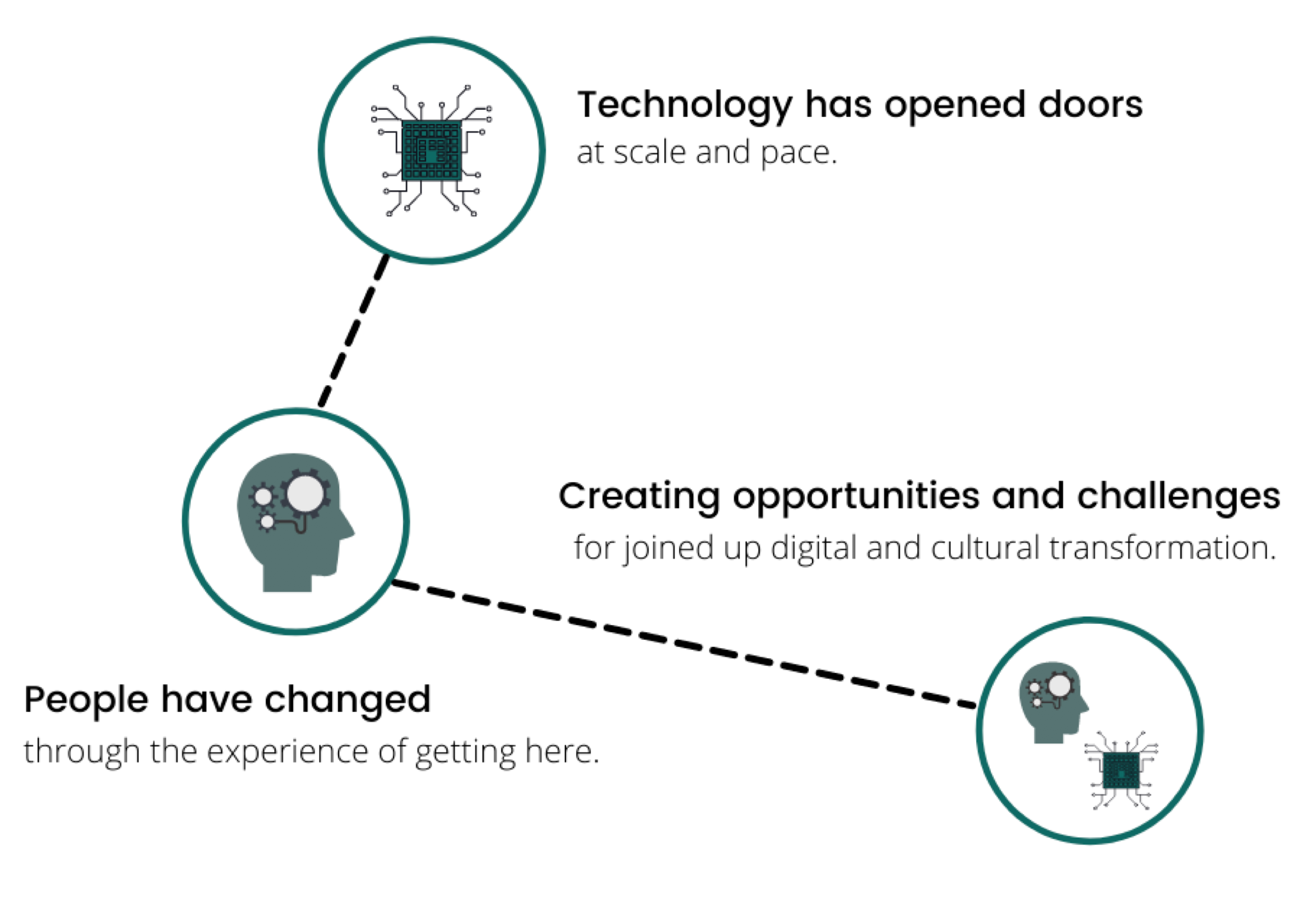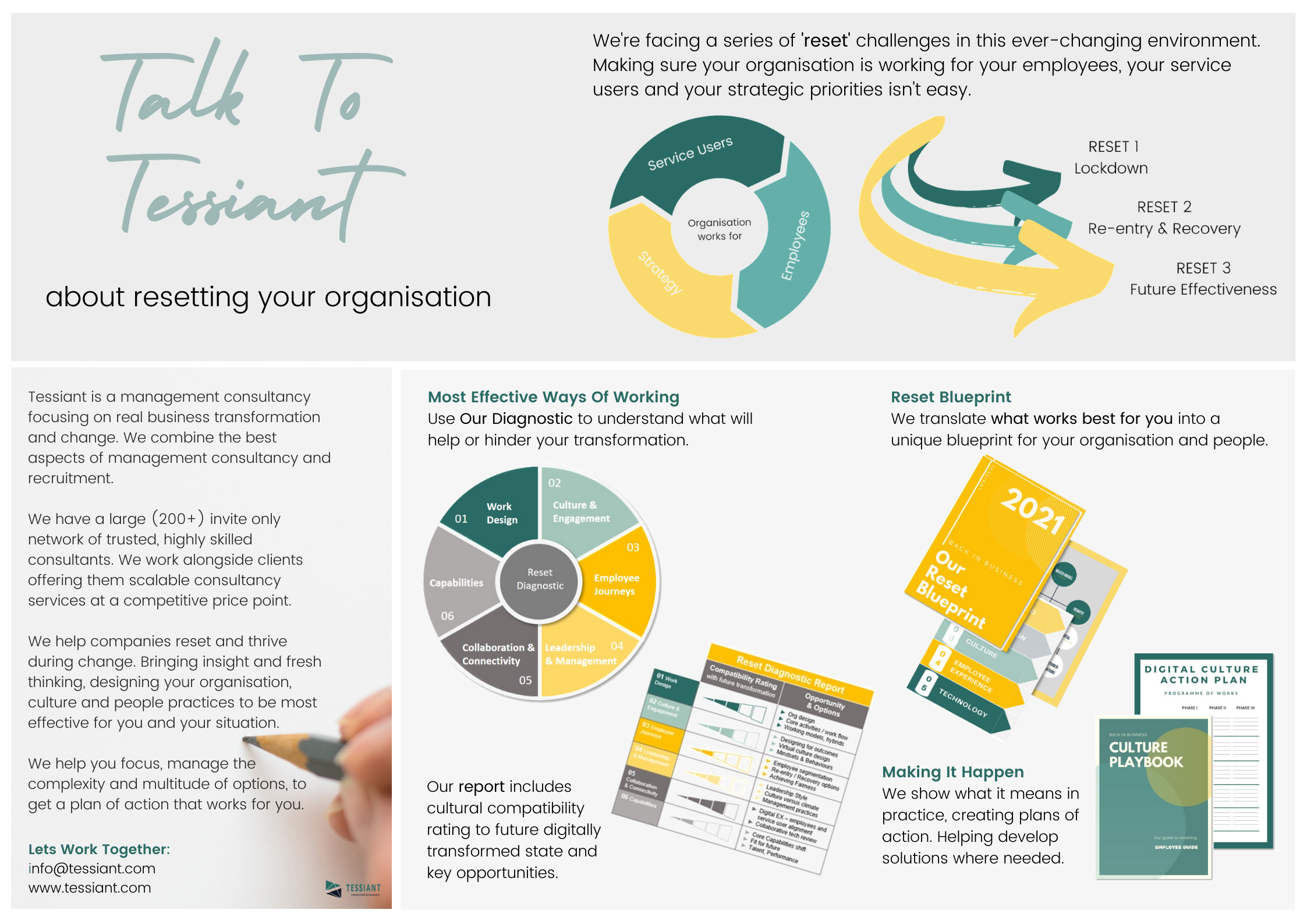Alex Covey, Partner at People & Culture, Tessiant, discusses the importance of combining technology and culture for a successful digital strategy transformation
Over the last 18 months, technology has opened new doors, turning possibilities into reality at a scale and pace previously difficult to imagine.
People – our employees – have faced change in every aspect of their lives and been indelibly changed by those experiences. As this potent mix of accelerated people/tech change is set to continue, we ask what happens when organisations find themselves at this intersection of technology and culture.
There has never been a more compelling time for Digital and Culture transformation to go hand in hand
Working with a broad variety of clients on transformational change, this relationship has never been clearer to Tessiant. From large UK retailers and global insurance providers, through to sports organisations, art galleries and charities, we repeatedly see that;
- Digital and technology transformation works best when it is adding value to human connections and experiences, not taking from them,
- Through experiences of the pandemic, employee outlook has changed. One movement has been towards a stronger sense of societal purpose and finding ways to harness growing energies such as these into your transformation can dramatically accelerate change.
- Whilst the future remains uncertain, building organisational resilience into the culture helps workforces not simply survive and adapt, but flourish.

How do you ‘Reset your Organisation’ for digital transformation?
The big challenge now being faced is how to simultaneously accelerate your digital transformation and reshape your culture, organisation and people for this future of work. Doing one without the other undermines the success of both, however, it certainly isn’t easy in a context where most organisations are also managing change around immediate recovery and re-entry.
Tessiant’s ‘Resetting your Organisation’ toolkit helps manage that complexity and focuses in on what’s right for your specific context. It provides a Culture & OD approach to get the organisation working effectively for your service users, your employees and the aims of your digital transformation.

Tessiant’s top tips to stop culture eating your digital strategy for breakfast
- Get on the same page. Ensure key stakeholders across technology and culture have a similar understanding of the future org and have shared outcomes.
- Know your cultural diagnosis. Understand how your organisation operates culturally, how that will help or hinder your future digitally-enabled state, and what your best match culture looks like. Tessiant’s diagnostic can aid this particularly tricky stage, helping you understand what you should be paying attention to, managing the complexity of sub-cultures and taking into consideration the many differences in employee experience and changes to ways of working over recent months. Our ‘compatibility’ report provides a clear, easily digestible analysis of your cultural context tailored against your future target aim, along with key opportunities for the best match culture.
- Build out your blueprint. Once you can see both your technological and cultural landscape, make active choices on what’s right for your organisation, your context and your people. A blueprint can capture your intent across a range of areas in a clear and coherent way. Allows for flexibility and ongoing changes, with a mix of specific decisions where known and broader principles give general direction.
- Translate into actions, make a start. Culture is very rarely a straight A-Z or delivered neatly as a project. But your blueprint acts as your anchor for steering activities to deliver against each intent. Engage employees early, breathe life into existing initiatives and give a free rein where directionally things are aligned.
- Learn fast and go again. Build-in broader measures of success to the blueprint, however, having a more rapid evaluation of initiatives as they happen helps everyone learn quickly what’s working and what’s not so that you can regroup and go again.
*Please note: This is a commercial profile
© 2019. This work is licensed under CC-BY-NC-ND.











